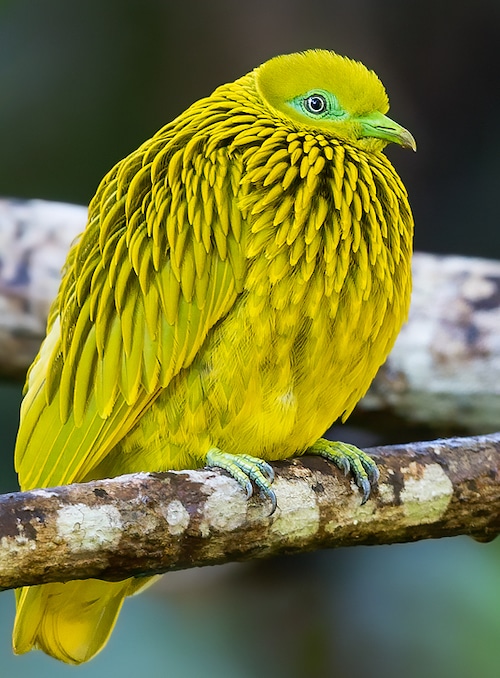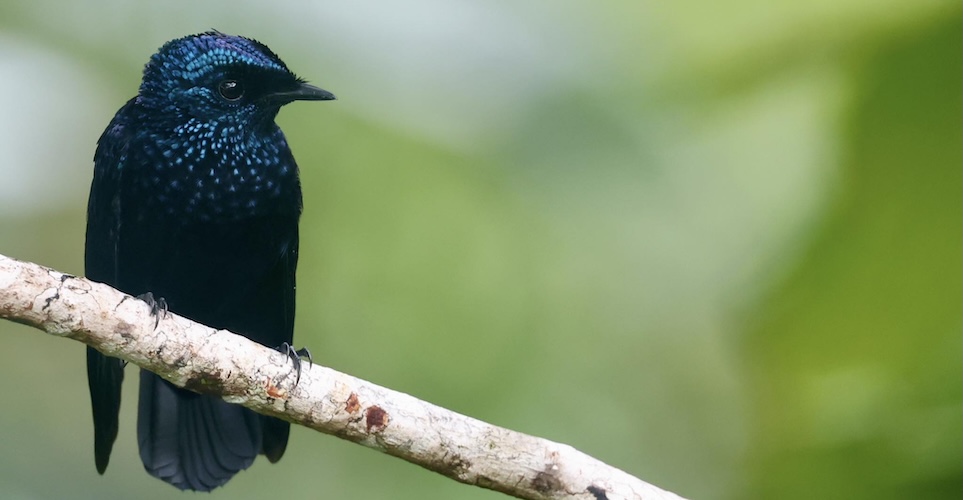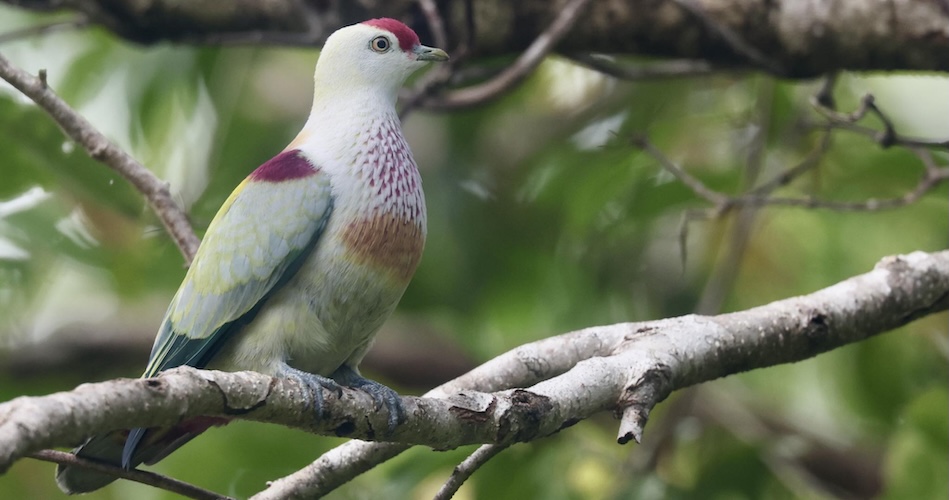Republic of Fiji

Fiji is an island nation in the South Pacific Ocean around 2,000 kilometres northeast of New Zealand, over 3,000 kilometres east of Sydney, Australia and over 5,000 kilometres from Hawaii. It is located east of Vanuatu, west of Tonga and south of Tuvalu. The country occupies an archipelago of about 330 islands, of which 110 are permanently inhabited, and over uninhabitable 500 islets, a total land area of just 18,300 square kilometres, although the country is scattered over 1,290,000 square kilometres. The two most important islands, containing three quarters of the land are Viti Levu and Vanua Levu, which together are inhabited by 87% of the c. one million population. The capital, Suva is in Viti Levu, with other towns being Nadi and Lautoka, The main towns on Vanua Levu are Labasa and Savusavu.
Other islands and island groups include Taveuni and Kadavu, the Mamanuca Group (just outside Nadi) and Yasawa Group, which are popular tourist destinations, the Lomaiviti Group, outside of Suva, and the remote Lau Group. Rotuma, some 500 kilometres (310 mi) north of the archipelago, has a special administrative status in Fiji. Fiji’s nearest neighbour is Tonga.
The islands are mountainous, with peaks up to 1,300 metres (4,250 ft), and covered with tropical forests forming two ecoregions: Fiji tropical moist forests and Fiji tropical dry forests. The climate in Fiji is tropical and warm most of the year round. The warm season is from November to April, and the cooler season lasts from May to October. Temperatures in the cool season average 22 °C (72 °F). Rainfall is variable, with the warm season experiencing heavier rainfall, especially inland. For the larger islands, rainfall is heavier on the southeast portions of the islands than on the northwest portions, with consequences for agriculture in those areas. Winds are moderate, though cyclones occur, on average, about once annually.
Endowed with forest, mineral, and fish resources, Fiji is one of the most developed of the Pacific island economies, though still with a large subsistence (farming or fishing) sector. Tourism is important, especially scuba diving on its reefs, as is fishing, but sugar cane growing and processing makes up a third of industry.
Birding Fiji
Birding the two main islands is productive and many of the special birds are widespread and accessible even in the resorts and ;local to towns and beaches. However, to ensure seeing all the endemic species and sub-species all four of the larger islands need to be visited.

Taveuni Silktail Lamprolia victoriae – ©Bird-Photo-Tours ASIA
Taveuni is the third-largest island in Fiji, after Vanua Levu and Viti Levu, with a total land area of 435 square kilometres. The cigar-shaped island, a massive shield volcano which rises from the floor of the Pacific Ocean, is situated 6.5 kilometres to the east of Vanua Levu, across the Somosomo Strait, and is part of the Northern Division. It has abundant flora and is known as the ‘Garden Island of Fiji’. It is a popular tourist destination and has world class birding opportunities. Access to the mountainous area of Des Voeux Peak which is the second highest on the island, a prime birding habitat, is literally just minutes from the main town Waiyevo area. The best way is to take a 4-wheel drive vehicle nearly to the top of the 1,195-meter peak, and then walk up from the locked gate. Likewise, Qeleni, on the northern end of the island also affords excellent bird watching. To get to Qeleni you have to take a 4-wheel drive about 5km up a rugged mountain road. Both locales offer the chance to see Orange-breasted Doves, Silktails, Ferntails and the Taveuni Musk Parrots.

Many-coloured Fruit Dove Ptilinopus perousii – ©Bird-Photo-Tours ASIA
Kadavu with an area of just over 400 square kilometres, is the fourth largest island in Fiji, and the largest island in the Kadavu Group, a volcanic archipelago consisting of Kadavu, Ono, Galoa and a number of smaller islands in the Great Astrolabe Reef. It is a tropical bird watcher’s dream come true! No 3-day hike or drive into a jungle to catch a glimpse of a bird, most of the native life fly around the island and the resorts all day and night! Kadavu has the additional attraction of the four endemic species found only on Kadavu and these species, like the Kadavu musk parrot, can all be seen on the grounds of most resorts.
-
Number of bird species: 180
(As at November 2025)
Number of endemics: 35
Peale’sImperial-pigeon Ducula latrans
Orange Dove Ptilinopus victor
Golden Dove Ptilinopus luteovirens
Velvet Dove Ptilinopus layardi
Bar-winged Rail Gallirallus poecilopterus
Fiji Petrel Pseudobulweria macgillivrayi
Fiji Goshawk Accipiter rufitorques
Crimson Shining-parrot Prosopeia splendens
Masked Shining-parrot Prosopeia personata
Red Shining-parrot Prosopeia tabuensis
Red-throated Lorikeet Vini amabilis
Collared Lory Vini solitaria
Rotuma Myzomela Myzomela chermesina
Orange-breasted Myzomela Myzomela jugularis
Kadavu Honeyeater Meliphacator provocator
Chattering Giant-Honeyeater Gymnomyza viridis
Duetting Giant-Honeyeater Gymnomyza brunneirostris
Western Wattled-Honeyeater Foulehaio procerior
Fiji Wattled Honeyeater Foulehaio taviunensis
Fiji Woodswallow Artamus mentalis
Natewa Silktail Lamprolia klinesmithi
Taveuni Silktail Lamprolia victoriae
Fiji Streaked Fantail Rhipidura layardi
Taveuni Streaked Fantail Rhipidura rufilateralis
Kadavu Fantail Rhipidura personata
Chestnut-throated Flycatcher Myiagra castaneigularis
Ogea Monarch Mayrornis versicolor
Slaty Monarch Mayrornis lessoni
Black-throated Shrikebill Clytorhynchus nigrogularis
Azure-crested Flycatcher Myiagra azureocapilla
Long-legged Thicketbird Cincloramphus rufus
Fiji Bush-warbler Horornis ruficapilla
Layard’s White-eye Zosterops explorator
Fiji Parrotfinch Erythrura pealii
Pink-billed Parrotfinch Erythrura kleinschmidti
-
Avibase
PDF ChecklistThis checklist includes all bird species found in Fiji , based on the best information available at this time. It is based on a wide variety of sources that I collated over many years. I am pleased to offer these checklists as a service to birdwatchers. -
Living National Treasures
Endemics ChecklistChecklist of Endemic Bird Species -
Wikipedia
Annotated ListThis is a list of the bird species recorded in Fiji. The avifauna of Fiji include a total of 179 species, of which 31 are endemic, and 13 have been introduced by humans. Numerous species listed have been extirpated from Fiji. -
eBird
PDF Checklist154 species (+35 other taxa) - Year-round, All years
-
A Guide to the Birds of Fiji and Western Polynesia
| (including American Samoa, Niue, Samoa, Tokelau, Tonga, Tuvalu and Wallis and Futuna) | By Dick Watling | Self-Published | 2004 | Paperback | 272 pages, 16 col plates, figs, tabs, maps | Out of Print | ISBN: 9789829030047 Buy this book from NHBS.com -
Important Bird Areas in Fiji
| Edited by Vilikesa T Masibalavu & Guy Dutson | BirdLife International | 2006 | Paperback | 66 pages, 50 Col photos, 14 tabs, 17 maps | Out of Print | ISBN: 9789829101013 Buy this book from NHBS.com
-
Wildlife Conservation Society Fiji
WebsiteTo preserve the functional integrity and resilience of Fiji's priority ecoscapes by integrating community-based adaptive management with science-based solutions in order to protect iconic species, maintain habitat connectivity and preserve livelihoods with the informed, active and sustainable support of local and national stakeholders. -
BirdLife
InformationDr Dick Watling, c/o Environment Consultants Fiji, P0 Box 2041, Government Buildings, Suva. +679 383189 watling@connect.com.fj -
NatureFiji-MareqetiViti
WebsiteNatureFiji-MareqetiViti is Fiji’s only domestic NGO working solely for the conservation and sustainable management of Fiji’s unique natural heritage. We aim to generate enthusiasm and local expertise in all matters associated with wildlife conservation and management through raising the level of conservation and environmental awareness and education…
-
FR Colo-I-Suva
InformationSatellite ViewColo-I-Suva Forest Park (pronounced Tholo-ee-Suva) was once a true tropical lowland rainforest, which has been interplanted with mahogany. It is in the upper drainage area of Waisila catchment, alongside Princes Road. The Department of Forestry manages the Forest Park. -
Kula Eco Park
WebsiteSatellite ViewKula Eco Park, located on the southern Coral Coast Area Viti Levu, is an environmental showplace dedicated to the conservation of Fiji's indigenous Fauna and to the environmental education of Fiji's children… -
NP Bouma National Heritage Park
InformationSatellite ViewBouma National Park is located on Taveuni Island, which is the third-largest island in Fiji. Fiji is located in the South Pacific Ocean northeast from Australia towards Hawaii. The national park area covers an area of 168 square miles (435 sq km). -
NP Koroyanitu National Heritage Park
WebsiteSatellite Viewround 10km southeast of Lautoka, Koroyanitu National Heritage Park has the most accessible walking trails of Fiji’s two National Heritage Parks. The park was created in 1992 to preserve the area’s natural forests and endemic birdlife from clearing for pine forest and encroaching grasslands. -
NP Sigatoka Sand Dunes
InformationSatellite ViewThe Sigatoka Sand Dunes National Park is located at the mouth of the Sigatoka River on the island of Viti Levu in Fiji. They are located approximately 3 km west of the town of Sigatoka. -
NP Waitabu Marine Park
WebsiteSatellite ViewIn 1998 the Waitabu Village of Taveuni declared its fishing grounds or "qoliqoli" to be "tabu" -- a no-take fishing zone. NZAID initially supported... -
RR Waisali
WebpageSatellite View...We were made very welcome by the attendant who explained a little about the Rainforest and then we set off. It is a strenuous hike but it gives you great insight in to the local endemic plants. It is just off the main road between....
-
BirdQuest
Tour OperatorNEW CALEDONIA, FIJI, VANUATU & SAMOA – the wonderful Kagu and a multitude of endemics -
Birding Ecotours
Tour OperatorFiji, a country in the South Pacific, is an archipelago of more than 300 islands. It is famed for its rugged landscape of blue lagoons and palm-lined beaches, and for eco-activities from mountain climbing and surfing to soft-coral diving and birdwatching. Its major islands, Viti Levu and Vanua Levu, contain the lion’s share of the population, meaning much of the country is uncrowded. -
Daku Resort
Tour OperatorBirdwatching in Fiji offers the opportunity to see a number of tropical birds in their natural habitat. Our island, Vanua Levu, is home to a large number of birds, including the rare silktail which is found in the eastern end of the island. -
Exploring Tourism Fiji
Tour OperatorYou get picked up at your Accommodation at 4.30 a.m. and travel by our air-conditioned 4Wheel Drive Vehicles to the Fijian Outback. Fiji has about 80 species of terrestrial and freshwater birds, 70 endemics... -
Kiwi Wildlife Tours
Tour OperatorSouth Pacific Islands Birdwatching Tours - Fiji offers many birding delights (large musk parrots, frenetic flashing silktails, garrulous honeyeaters, exquisite golden and orange doves, Fijian goshawk, tropic-birds, frigatebirds, boobies and noddies). New Caledonia is also a must (kagu, cloven feathered dove, horned parakeet); with tropical, coral-fringed, rainforest-rich, mountainous islands or coral atolls throughout the region -
Rockjumper Birding Tours
Tour OperatorQuite simply, this is a tour unlike any other! Each island that we explore on this epic adventure exhibits its own distinctive ensemble of characteristic and rarely-seen endemics, including some of our planet’s least-known species; and, although these oceanic islands and their bird lists are not large, they are nevertheless very special indeed. -
Taveuni Tourism Association
Tour OperatorTaveuni offers the best bird watching Fiji. Over 100 species of bird can be found here. Try Des Voeux Peak at dawn for a chance to see the elusive Orange Dove which is endemic to Taveuni and can be spotted in certain areas along with the silktail. Avid birdwatchers also recommend the Vidawa Rainforest Trail and the forested Lavena coast is also a good spot to see orange or flame doves, Fiji goshawks, wattled honeyeaters, parrots and grey and white herons. -
Tropical Birding Tours
Tour OperatorAll we have to do to sell this tour to most birders is list the following: an endemic and bizarre family in the Kagu; silktails; shining-parrots; Orange, Velvet, Golden and Cloven-feathered doves; and Fiji, Red-headed and Pink-billed Parrot-finches. Job done!
-
2016 [07 July] - David Hoddinott & Rich Lindie - Samoa, Fiji, Vanuatu & New Caledonia
Report PDFAlong the way wefound not one but several Silktails, more obliging MaroonShining Parrots, Fiji Wattled Honeyeater, Yellow-billedHoneyeater, Polynesian Triller, Fiji Whistler, FijiShrikebill, dazzling Azure-crested Flycatchers, aconfiding but active Pacific Robin, Fiji White-eyes,Polynesian Starlings, a few shy Island Thrushes, Many-coloured Fruit Doves, Fiji Parrotfinches and severalspecies we had seen the day before - a list that includesmuch of the island's endemics! -
2016 [10 October] - Andrew Walker
PDF ReportTrip highlights were numerous and included most endemics, Kagu, New Caledonian Crow, Crow Honeyeater, (Natewa) Silktail, Horned Parakeet, Masked Shining Parrot, Maroon Shining Parrot, Crimson Shining Parrot, Collared Lory, Azure-crested Flycatcher, Samoan Whistler, Mao, and Flat-billed Kingfisher, but the many interesting and beautiful pigeons and doves really stood out as being exceptional, with Cloven-feathered Dove, Goliath Imperial Pigeon, Barking Imperial Pigeon, Golden Fruit Dove, Orange Fruit Dove, Whistling Fruit Dove, Many-colored Fruit Dove, and Crimson-crowned Fruit Dove all seen well. -
2017 [07 July] - Erik Forsyth
PDF ReportThis year's tour to the south-west Pacific proved, yet again, that not only is the region a birding hotspot, but things are rapidly improving in the tourism and travel sector. Indeed, we experienced very little of the once notorious flight delays that plagued the region, dined in several fine restaurants, and lived it up in some truly wonderful accommodations. The birds, of course, were as spectacular as always, and our exploits secured us great sightings of no less than 78 of the region's endemics, including such megas as Kagu, Horned Parakeet, Orange Fruit Dove and Mao! -
2018 [08 August] - Mark Smiles
PDF ReportThis was the second leg in a month-long trip to the South Pacific & Australia with my wife, Louise; visiting New Caledonia (1 week) and Fiji (2 weeks), before spending a week taking things slightly easier in the Blue Mountains, east of Sydney on our way home -
2018 [11 November] - Mark Van Beirs - New Caledonia & Fiji with Vanuatu & Samoa
PDF ReportThe unique Orange Fruit Dove was the undisputed highlight of our very enjoyable foray to the Melanesian islands of Vanuatu and New Caledonia and the Polynesian islands of Fiji and Samoa. These little dots sprinkled about in the western Pacific Ocean hold an amazing variety of endemics and specialities and on our recent trip we managed to see the majority of these. -
2022 [02 February] - Peter Marsh
PDF ReportOur first Fijian bird was FIJI WOODSWALLOW. Apart from the ubiquitous Common and Jungle Mynas (never to be mentioned again!) nothing else was showing itself in the rain.
-
Bird Watching in Fiji
WebpageFiji, compared to other South Pacific nations such as New Guinea, lacks a diversity of avian life but there are enough interesting and sometimes spectacular looking birds to attract visitors from throughout the world. -
Birds and bird-watching
WebsiteOverview of a number of other islands too -
Endangered Wildlife of Fiji
WebpageA resource paper for teachers and others…


